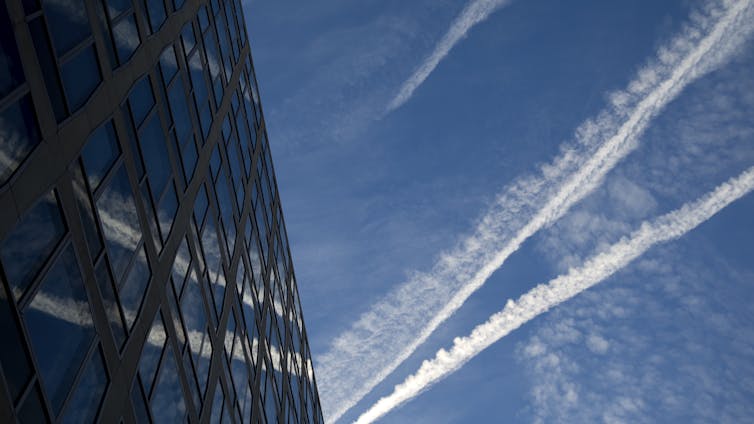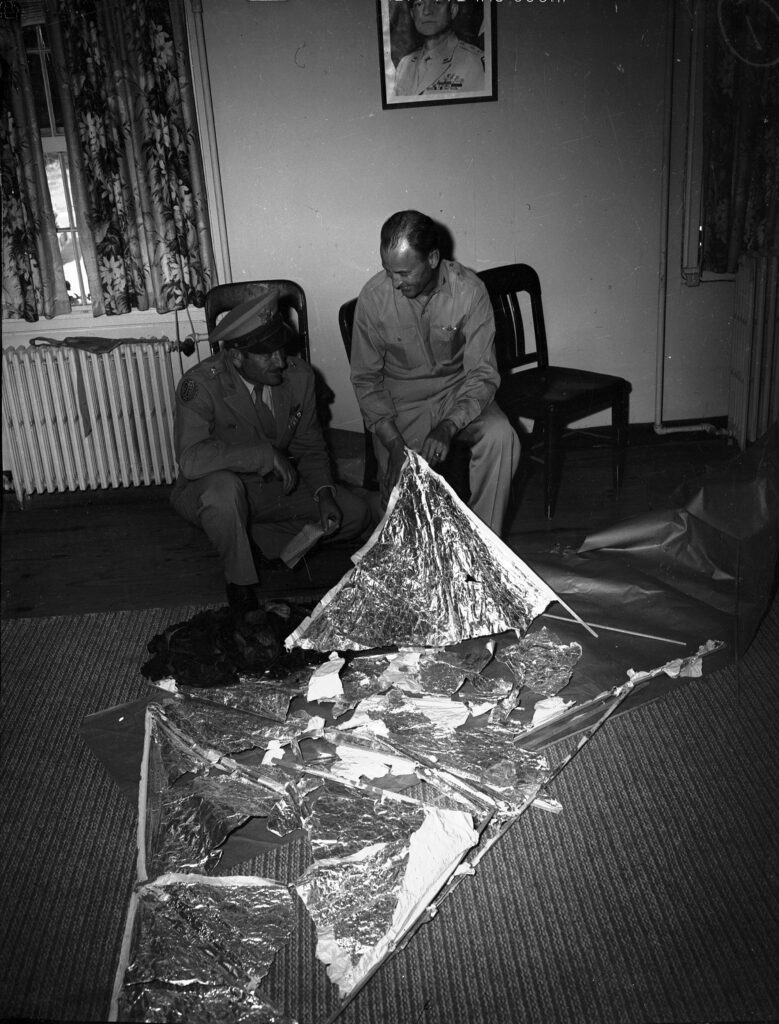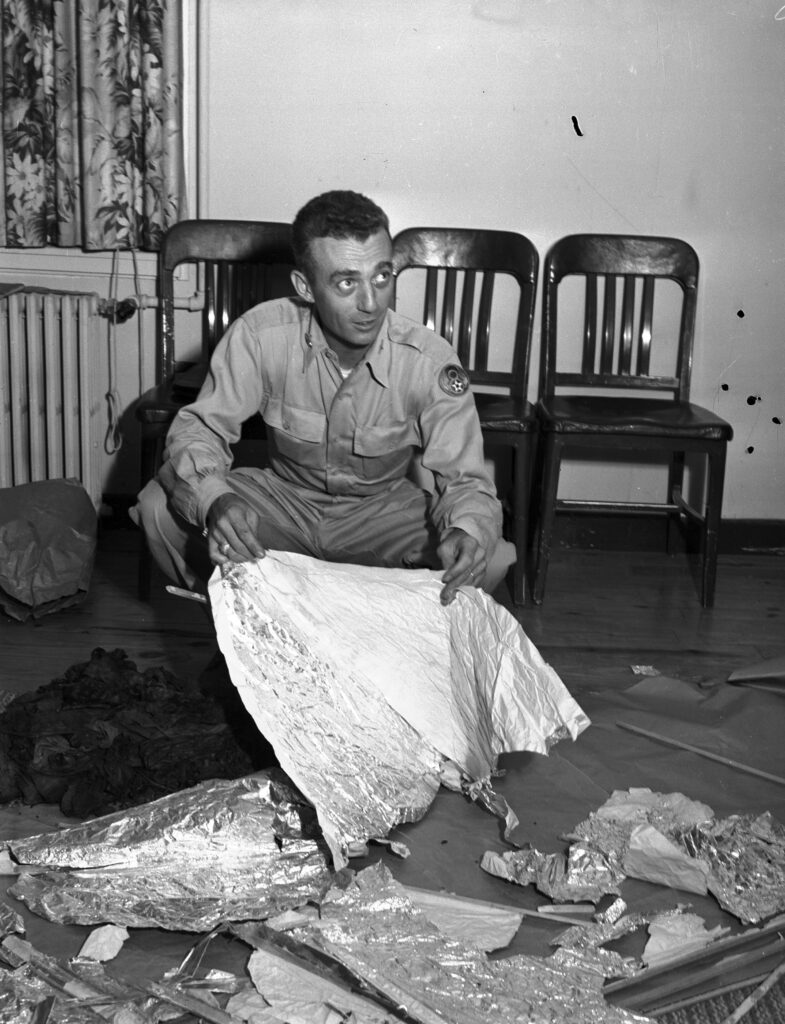
unknown
History behind the mystery of the Roswell Incident
Last Updated on June 29, 2024 by Daily News Staff
The Roswell Incident has been a source of fascination and speculation since it first occurred in 1947. The incident involved the crash of an unidentified object in the desert near Roswell, New Mexico. Although the incident was initially reported by the US military as a “flying saucer,” its true nature has never been definitively established.
The first recorded sighting of the unknown object came from local rancher Mac Brazel, who discovered the crashed debris while tending to his sheep on the Foster ranch. Mac Brazel described a large area of bright wreckage made up of rubber strips, tinfoil, and rather tough paper. Intrigued by his find, Brazel contacted the local sheriff, who then informed the Roswell Army Air Field (RAAF). The US military was notified and dispatched a team to the scene. Upon arriving at the crash site, the military personnel reported finding a “flying disc” and several alien bodies. The military later retracted this statement and claimed the object was a weather balloon.
Despite this official explanation, many people remain convinced that the Roswell Incident was, in fact, a crash involving an alien spacecraft. Over the years, there have been numerous reports of mysterious lights and objects in the sky near Roswell, as well as multiple witness accounts of alien beings. Some of these reports even suggest that the US government has recovered and reverse-engineered alien technology, contributing to advancements in various fields such as electronics and aeronautics.
In addition, there have been many theories as to why the US military would have covered up the incident, ranging from a desire to keep advanced technology secret to a fear of public panic. Some theorists propose that the Cold War context at the time could have intensified the need for secrecy, as any potential technological edge would be crucial. The infamous “Majestic 12” documents, which surfaced in the 1980s, also fueled speculations by suggesting the existence of a secret committee involved in UFO investigations. Meanwhile, skeptics argue that the secrecy was simply due to the government’s embarrassment over the misidentification of a mundane weather balloon.
The Roswell Incident has permeated popular culture, inspiring a plethora of books, movies, and television series. Museums and tours dedicated to the incident have also sprung up in Roswell, turning it into a tourist hotspot. The annual Roswell UFO Festival attracts thousands of enthusiasts who celebrate and debate the mysteries of the 1947 crash.
To this day, the incident remains a source of intrigue and debate, with no definitive answer as to what really happened in Roswell. Whether it was an alien visitation, a covert military experiment, or merely a misidentified weather balloon, the Roswell Incident continues to captivate the imagination of many, keeping the legends and lore very much alive.
For more information: https://en.wikipedia.org/wiki/Roswell_incident
For further information and articles about the UFO topic, please visit our Unknown Science section. It contains a wealth of resources and insights on this fascinating subject. Explore our collection to delve deeper into the world of unidentified aerial phenomena and expand your knowledge on this intriguing topic. https://stmdailynews.com/category/science/unknown
You can also get caught up with stories via our STM & Coffee newsletter, delivered straight into your inbox. This newsletter provides a comprehensive round-up of the latest news, insightful articles, and fascinating stories from around the world. Stay informed and entertained with weekly updates that cover a variety of topics, tailored to your interests. Don’t miss out on what’s trending and important; subscribe today to ensure you’re always in the know. Enjoy your coffee while catching up on the news that matters to you!
Discover more from Daily News
Subscribe to get the latest posts sent to your email.
Blog
Why the chemtrail conspiracy theory lingers and grows – and why Tucker Carlson is talking about it
The chemtrail conspiracy theory has surged despite being thoroughly debunked. Learn why people believe contrails are chemical weapons, how Tucker Carlson amplified the theory, and what psychology reveals about conspiracy thinking and our need for control.
Last Updated on December 7, 2025 by Daily News Staff

Dive into “The Knowledge,” where curiosity meets clarity. This playlist, in collaboration with STMDailyNews.com, is designed for viewers who value historical accuracy and insightful learning. Our short videos, ranging from 30 seconds to a minute and a half, make complex subjects easy to grasp in no time. Covering everything from historical events to contemporary processes and entertainment, “The Knowledge” bridges the past with the present. In a world where information is abundant yet often misused, our series aims to guide you through the noise, preserving vital knowledge and truths that shape our lives today. Perfect for curious minds eager to discover the ‘why’ and ‘how’ of everything around us. Subscribe and join in as we explore the facts that matter. https://stmdailynews.com/the-knowledge/
Discover more from Daily News
Subscribe to get the latest posts sent to your email.
unknown
The Kingman UFO Crash of 1953: Fact, Fiction, or Cold War Legend?
Explore the mystery of the 1953 Kingman UFO crash. From rumors of wreckage taken to Area 51 to claims of an alien named “J-Rod,” this Cold War story remains one of UFO history’s most debated legends.
Last Updated on October 11, 2025 by Daily News Staff
In the spring of 1953, the quiet desert town of Kingman, Arizona, became the center of one of UFO history’s most debated mysteries. At the height of the Cold War, witnesses claimed that something unusual fell from the desert sky. What followed has fueled speculation for decades—connecting the small Arizona town to America’s most secretive base, Area 51.
The Crash in the Desert
According to reports, an unidentified craft was said to have crashed near Kingman in May 1953. Local accounts suggested that the U.S. military quickly secured the site, transporting the wreckage under tight secrecy. For years, however, this alleged event remained little more than rumor, blending into the larger backdrop of Cold War fears and secrecy.
Area 51 and the Alleged Cover-Up
The story took on new life when claims surfaced that the wreckage had been moved to Area 51, the highly restricted military base in Nevada long associated with UFO lore. At the time, the base itself was shrouded in secrecy, making it fertile ground for speculation about what the government might be hiding.
Bill Uhouse and “J-Rod”
The most astonishing claims didn’t appear until 1998, when retired military engineer Bill Uhouse stepped forward. Uhouse alleged that the U.S. government not only recovered alien technology but also encountered a living extraterrestrial being. He referred to this being as “J-Rod” and claimed it worked alongside American scientists to unlock the secrets of advanced propulsion systems.
If true, this collaboration would mark one of the most extraordinary events in modern history—bridging human science with extraterrestrial knowledge. Skeptics, however, point out the lack of verifiable evidence and suggest the story may be a product of Cold War imagination.
A Mystery That Endures
Like many UFO stories from the mid-20th century, the Kingman crash remains steeped in uncertainty. Did a spacecraft really come down in the Arizona desert? Was J-Rod a real extraterrestrial presence, or simply another chapter in the long saga of Cold War secrecy and speculation?
What is certain is that the Kingman UFO crash continues to spark curiosity, debate, and fascination—reminding us of how the lines between history, myth, and mystery can blur.
🔎 Related Topics
- The Roswell Incident of 1947 – History.com
- Inside Area 51 – National Geographic
- Cold War UFO Sightings – CIA Declassified Documents
- The Kingman UFO Crash – A Discreet Downed UFO That Slipped Under The Radar?
- Arizona UFO Crash – UFO Casebook
The science section of our news blog STM Daily News provides readers with captivating and up-to-date information on the latest scientific discoveries, breakthroughs, and innovations across various fields. We offer engaging and accessible content, ensuring that readers with different levels of scientific knowledge can stay informed. Whether it’s exploring advancements in medicine, astronomy, technology, or environmental sciences, our science section strives to shed light on the intriguing world of scientific exploration and its profound impact on our daily lives. From thought-provoking articles to informative interviews with experts in the field, STM Daily News Science offers a harmonious blend of factual reporting, analysis, and exploration, making it a go-to source for science enthusiasts and curious minds alike. https://stmdailynews.com/category/science/
Discover more from Daily News
Subscribe to get the latest posts sent to your email.
Entertainment
Fire in the Sky vs. Travis Walton’s Testimony: What Really Happened?
Discover the truth behind Fire in the Sky vs. Travis Walton’s real testimony. Learn what really happened during the 1975 UFO abduction and what Hollywood changed for the movie.
Last Updated on October 6, 2025 by Daily News Staff
![]()
When Travis Walton vanished from an Arizona forest in 1975, the world was stunned. His story of being struck by a beam of light from a UFO and later reappearing after five days became one of the most famous alien abduction cases in history. Nearly two decades later, Hollywood brought his story to the big screen in the 1993 film Fire in the Sky.
But how much of the movie matched Walton’s actual testimony?
The Real Testimony: Travis Walton’s Experience
In Walton’s own words, detailed in his book The Walton Experience:
He and six coworkers saw a glowing disc-shaped UFO while driving through the Apache-Sitgreaves National Forest. Walton approached and was struck by a beam of light, vanishing before their eyes. He later recalled waking inside a clean, metallic room. He first encountered short, large-eyed beings — similar to the classic “greys.” After panicking, he was met by taller, human-like beings who guided him silently through the craft. He blacked out again and awoke days later on the roadside as the UFO departed.
Walton’s description was eerie and confusing, but not grotesque.
The Hollywood Version: Fire in the Sky (1993)
The film’s abduction sequence became infamous for its nightmarish visuals:
Walton awakens in a slimy cocoon-like environment, unlike the clean metallic room he described. He discovers corpses wrapped in membranes — a pure Hollywood invention. The aliens are depicted as grotesque, insect-like creatures rather than the greys or human-like beings Walton reported. Walton is violently restrained on a table while aliens perform invasive procedures, including a chilling needle-to-the-eye scene.
The movie leaned heavily into horror, turning Walton’s mysterious account into a terrifying cinematic ordeal.
What Was Real vs. Fiction
Accurate in the Film:
Walton struck by a beam of light and vanishing. His coworkers sticking to their story and passing polygraphs. Walton reappearing days later, shaken and disoriented.
Invented for Hollywood:
Cocoon-like interiors and human corpses. Alien torture and invasive experiments. Insect-like, monstrous alien designs. The extreme horror atmosphere.
Walton’s View
Travis Walton himself has stated that while Fire in the Sky captured the drama of his disappearance, it distorted the abduction itself. He called the film’s alien sequence “Hollywood horror” and emphasized that his real experience, though frightening, was not sadistic or grotesque.
The Lasting Legacy
Today, the Travis Walton UFO incident remains one of the most debated abduction cases ever. Fire in the Sky introduced the story to millions but also blurred the line between fact and fiction. For Walton, the truth was strange enough — and far less like a nightmare than Hollywood imagined.
🔗 Related External Reading
Skeptical Inquirer: The Travis Walton Abduction Revisited (searchable article, skeptical perspective)
STM Daily News is a vibrant news blog dedicated to sharing the brighter side of human experiences. Emphasizing positive, uplifting stories, the site focuses on delivering inspiring, informative, and well-researched content. With a commitment to accurate, fair, and responsible journalism, STM Daily News aims to foster a community of readers passionate about positive change and engaged in meaningful conversations. Join the movement and explore stories that celebrate the positive impacts shaping our world.
The Inspiring Legacy of Raymond E. Fowler: A Journey into the Unknown
Discover more from Daily News
Subscribe to get the latest posts sent to your email.




